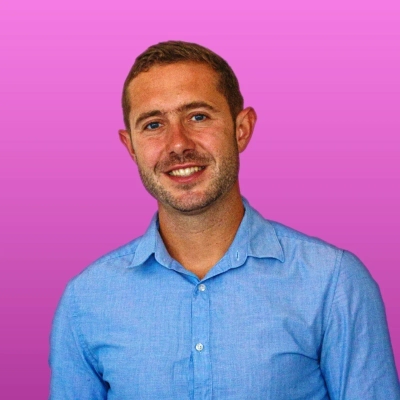Startup Lessons: Turn Failures into Burnout-Proof Strategies
Startup journeys are filled with challenges, but each setback offers valuable lessons for growth. This article presents expert-backed strategies to transform failures into resilient business practices. Discover how to build sustainable processes, prioritize effectively, and maintain a healthy perspective on setbacks to create a burnout-proof startup.
- Reframe Setbacks as System Design Feedback
- Build Recovery into Business Rhythm
- Implement Capacity Discipline for Sustainable Growth
- Treat Startup Growth as a Marathon
- Learn from Failures to Improve Processes
- Prioritize Nervous System as Business Asset
- View Failure as Symptom Not Problem
- Focus on Process Over Perfection
- Recognize Failure Is Not End
- Strictly Prioritize Essential Tasks
- Analyze Process Not People After Setbacks
- Set Realistic Goals After Experiencing Failures
Reframe Setbacks as System Design Feedback
Early in my startup, we rushed a multi-site go-live that went sideways: a configuration error broke after-visit summaries, on-call pages spiked, and two engineers practically camped in the office. We fixed the bug quickly, but the real damage was to morale. That week showed me how easily unplanned work becomes the spark for burnout.
Instead of treating it as an isolated crisis, we made it the blueprint for change. We introduced blameless postmortems that focus on system fixes, not scapegoats. We adopted service-level objectives and error budgets so speed never outruns stability. We automated noisy alerts, enforced quiet hours, and started measuring human outcomes: sleep debt, after-hours EHR time, and pulse surveys alongside uptime. In healthcare IT, where burnout drives errors and turnover, those signals matter as much as code quality.
The payoff was striking: a 38% drop in P1 incidents, faster recovery times, and a team that felt more in control even as we shipped faster. More importantly, it shifted my mindset. I used to see challenges as tests of grit; now I see them as feedback on system design. People don’t fail; processes do. And sometimes, what looks like a setback is actually a stress test pointing straight at the relief valves you need to build.
That failure taught me to value calm over heroics. We didn’t lower our ambition; we raised our discipline. And in the long run, that’s what keeps both the company and the people building it from burning out.
 Riken Shah
Riken Shah
Founder & CEO, OSP Labs
Build Recovery into Business Rhythm
One of the most important lessons I’ve learned about avoiding burnout in a startup came directly from failure. In the early days, I believed success was tied to pushing harder — longer hours, endless context switching, saying yes to every opportunity. It worked for a while, until it didn’t. I hit a wall, and when the exhaustion set in, it wasn’t just personal. Decisions suffered, momentum slowed, and the team felt the ripple effect. That failure forced me to rethink how I approached both growth and resilience.
The turning point was building structured recovery into the business itself. Instead of waiting until I was burned out, I began treating rest and reflection as non-negotiable parts of the operating rhythm. After major product pushes or fundraising sprints, I schedule deliberate downtime for myself and the team — not as an afterthought, but as a built-in phase of the process. We use that time to reflect on what worked, what didn’t, and how to recalibrate before charging ahead again.
The effect has been twofold. First, it prevents burnout by giving space to recover before exhaustion becomes a crisis. Second, it reframes setbacks as part of the cycle rather than as personal failures. When something doesn’t go as planned, instead of spiraling into overwork to “fix” it, I use it as a signal to pause, reset, and realign. Ironically, those pauses often lead to clearer insights and stronger strategies than grinding through ever did.
What’s changed most is my perspective on challenges. I no longer see them as threats to push past at all costs, but as signals — reminders to pace, to reflect, to grow. That shift has made me a more sustainable founder and a better leader, and it’s helped build a culture where resilience isn’t about powering through, but about building smarter rhythms for the long game.
Implement Capacity Discipline for Sustainable Growth
One setback that taught me a lot about burnout prevention came during the early years of my company. We had taken on multiple projects simultaneously, driven by the belief that saying yes to everything was the best way to grow. It worked for revenue in the short term, but within months I noticed a troubling pattern: deadlines were stacked, the team was exhausted, and even small setbacks felt overwhelming. We delivered, but the cost was unsustainable.
Instead of treating that period as just a rough patch, I reframed it into a lesson about capacity discipline. We implemented a rule where no new client engagement would start without a clear buffer for the team, and we created internal checkpoints where people could flag workload risks early without judgment. It wasn’t easy at first — turning down opportunities felt counterintuitive — but the payoff was clear. The team regained energy, projects moved with more creativity, and the quality of work spoke louder than raw volume.
That failure shifted my perspective: challenges aren’t just obstacles to push through, they’re signals to re-engineer the system. By treating setbacks as design flaws rather than personal shortcomings, I learned that resilience in a startup isn’t about working harder — it’s about building guardrails that protect people from reaching the breaking point.
 Naresh Mungpara
Naresh Mungpara
Founder & CEO, Amenity Technologies
Treat Startup Growth as a Marathon
One of the biggest setbacks we faced early on was trying to scale too quickly without fully understanding the emotional toll on the team. We stockpiled projects, basically ignoring their human cost. We were missing deadlines, not making assertive decisions, and barely making it as a team with absolute stretch. The experiences were initially failures; looking back today, every moment was a reset button.
Lesson learned: if you are growing a startup like a sprint, you are ensured burnout. We started treating the business like a marathon. This meant establishing slowdown systems — every launch was followed by enforced reflection and light work weeks after any longer stretches. We developed a culture where it was a prerogative to be able to say, “I am at capacity.”
More often than not, we stopped brushing setbacks under the carpet. The beautiful thing was that resilience and creativity were being released; no one was running on empty. It taught me that setbacks are not dead ends; they are signals telling you when to hit the brake and protect the energy of your team.
I do not fear setbacks anymore; they have become an early warning system, a reminder that sustainable impact is about protecting energy.
Setbacks don’t frighten me anymore; they’ve become an early-warning system, a reminder that sustainable impact is about protecting people and not about chasing metrics.
 Vasilii Kiselev
Vasilii Kiselev
CEO & Co-Founder, Legacy Online School
Learn from Failures to Improve Processes
We once rushed through a big launch, thinking we had to power through no matter what. The team was tired, stressed, and honestly, the results didn’t match the effort. After that, we sat down and talked about what went wrong. Too many last-minute changes, unclear tasks, and no time to breathe. That failure helped us realize burnout doesn’t come out of nowhere. It builds up when the process is broken.
Since then, we’ve made a few changes. If a project starts feeling too packed, we pause and check if we need to change things around. We also take a short break after big deadlines so people can reset before jumping into the next thing. That one rough launch taught me that challenges are actually helpful if you learn from them. They show you what needs fixing before it breaks you.
 Matias Rodsevich
Matias Rodsevich
Founder & CEO, PRLab | B2B Tech PR Agency
Prioritize Nervous System as Business Asset
Early in my entrepreneurial journey, I learned that my initial approach of constant hustle was actually creating a barrier to sustainable growth rather than driving success. This realization came after experiencing burnout that forced me to reconsider how I structured my business operations and personal work habits. I now view my nervous system as my greatest business asset and have redesigned my company around steadiness and capacity instead of relentless work. This perspective shift has transformed how I view challenges — not as obstacles to power through, but as signals to reassess and optimize our systems for long-term sustainability.
 Karen Canham
Karen Canham
Entrepreneur/Board Certified Health and Wellness Coach, Karen Ann Wellness
View Failure as Symptom Not Problem
As a general rule, I don’t think of failure as the problem, but merely a helpful symptom of the actual problem.
The underlying problem that resulted in failure was always there, but now it has manifested itself into something detectable, allowing us to fix it.
A great example is losing a client due to software bugs. The bugs were always an issue, but the corresponding failure highlights their existence to us, allowing us to tackle the actual problem.
Consequently, I think of failure as an expensive form of real-world pressure testing. Some things buckle under pressure, but that reveals a wealth of information that enables corrective action.
Failure is only frustrating when you see it as the problem rather than a mere symptom of the problem. That attitude isn’t conducive to long-term improvement, leaving people paralyzed with fear.
Realistically, you learn far more from your failures than you do from your successes, and constant success likely indicates complacency. Complacency breeds stagnation, and eventually, you will be overtaken by organizations that are more comfortable taking risks and learning from failure.
 Oliver Savill
Oliver Savill
CEO and Founder, Test Partnership
Focus on Process Over Perfection
Early in my startup journey, I burned out pursuing perfection: long hours, no breaks, trying to control every outcome. One major setback forced me to rethink. I had to delegate critical tasks and trust my team, even when it felt uncomfortable. That failure taught me that overextending yourself isn’t a badge of honor; it only leads to burnout.
Since then, I approach challenges with a focus on process over perfection. I break big problems into manageable steps, rely on data to guide decisions, and schedule recovery time as non-negotiable. This mindset turns setbacks into learning opportunities rather than energy drains.
 Alex Smereczniak
Alex Smereczniak
Co-Founder & CEO, Franzy
Recognize Failure Is Not End
As an entrepreneur, I have, of course, had times of failures and setbacks. But, being where I am today, I’ve learned that I can get past them and that they don’t necessarily mean that I or my business is a failure. So, that’s helped me have a better perspective when facing challenges where I feel as though failure is encroaching. Instead of putting increasing pressure on myself, leading to a higher likelihood of burnout, I will often take a step back and recognize that failure isn’t the end of the world.
 Seamus Nally
Seamus Nally
CEO, TurboTenant
Strictly Prioritize Essential Tasks
I accepted every opportunity at first, including client introductions and feature requests, which almost destroyed me. During that quarter, I worked fourteen hours daily for multiple weeks in a row. The burnout experience became severe because I discovered I spent most of my time being busy instead of being effective.
I began implementing strict prioritization rules after that experience. The company rejects any initiative which fails to advance essential metrics or support our future direction. The change in perspective transformed my stress into a clear understanding. The challenges I face today function as evaluation tools instead of dangerous obstacles. My workload becomes excessive when I allow nonessential tasks to enter my workflow.
 Vincent Carrié
Vincent Carrié
CEO, Purple Media
Analyze Process Not People After Setbacks
When you’re running a startup, you feel like every setback is a catastrophe. In the early days, if a major marketing campaign flopped or a big operational project fell through, our first instinct was to just work harder. We’d put in more hours, grind it out, and double down on a bad idea. We saw failure as a personal defeat, and it created this unsustainable “fix-it-at-all-costs” mentality that led to serious burnout.
My perspective completely changed after a particular setback that hit us hard. We had a major product launch that didn’t go as planned. It was a failure in both operations (there were some fulfillment issues) and marketing (the campaign didn’t resonate with customers). Instead of immediately trying to pick up the pieces and work through the night, I made us all stop. I instituted a new rule: after a major failure, we conduct a “Post-Mortem of Process, Not People.”
This meant we would hold a meeting not to point fingers or blame individuals, but to objectively analyze the system that failed. From an operations perspective, we’d ask questions like, “Was our inventory management system set up correctly for this volume?” or “Did we have the right communication in place between our sales and fulfillment teams?” On the marketing side, we’d look at, “Did we have the right tools to segment our audience?” or “What was the feedback loop like between our creative and our sales data?” We treated the failure as a gift of information, a chance to learn exactly what broke in our process.
The impact was immediate and profound. It took the emotional weight out of our failures. Instead of fearing setbacks, our team started to see them as a way to make our business stronger. We found dozens of small friction points in our operations and marketing that we never would have discovered otherwise. The team became more resilient, and our processes became more robust.
My advice is to stop seeing failure as a personal defeat and start seeing it as a lesson in building a better business. When a challenge arises, stop and analyze the process. You’ll find that most of your problems aren’t a result of human error, but of a flawed system. And when you fix the system, you prevent future failures and the burnout that comes with them.
 Illustrious Espiritu
Illustrious Espiritu
Marketing Director, Autostar Heavy Duty
Set Realistic Goals After Experiencing Failures
One way I’ve leveraged failure to prevent future burnout in my startup is by intentionally setting realistic goals and expectations after experiencing setbacks. When an ambitious product launch failed, it forced a hard reset: instead of pushing relentlessly for rapid growth, I reassessed what was truly achievable and aligned milestones with available resources. This approach changed how I handle challenges — I treat failures as signals to pause, reflect, and recalibrate direction, rather than stress and overextend.
As a result, my perspective evolved from viewing setbacks solely as obstacles to seeing them as opportunities for strategic improvement and self-care. By learning to set boundaries, delegate effectively, and prioritize mental health, each failure became a catalyst for building a healthier, more resilient work environment. This not only reduced personal burnout but also empowered the team to approach challenges with patience and adaptability.
 Olena Lazareva
Olena Lazareva
Product Manager


